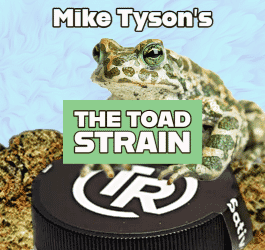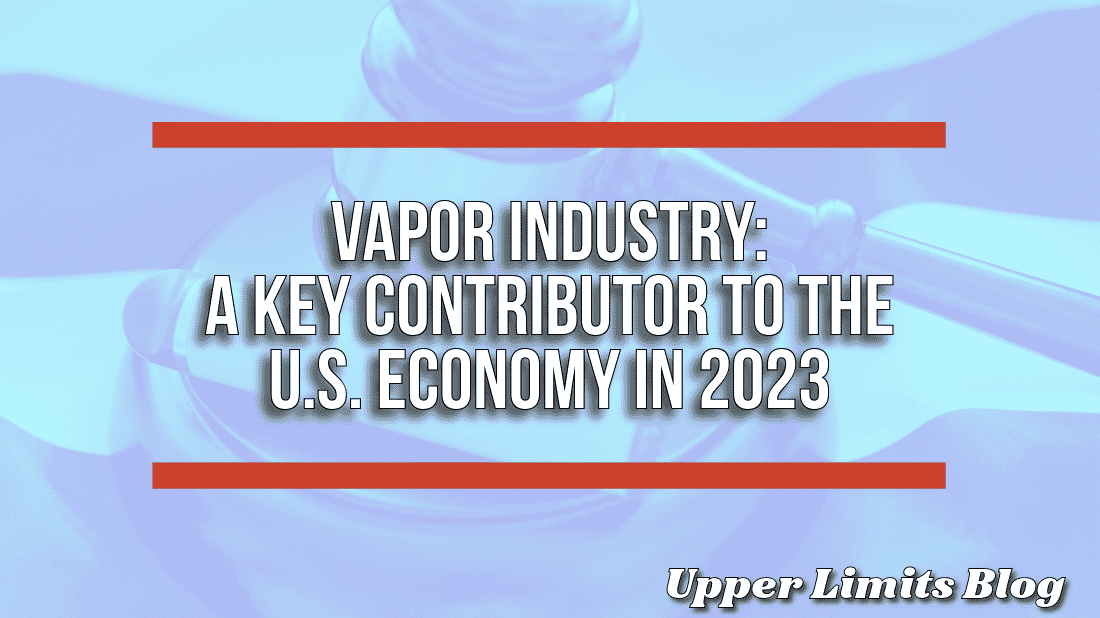The Amazing World Of Cannabis Cannabinoids

The Amazing World of Cannabis Cannabinoids: A Comprehensive Cannabinoid Guide
Cannabis has been cultivated and used for recreational and medicinal purposes for centuries. At the heart of its therapeutic potential are the cannabinoids, the unique compounds found within the plant. Understanding cannabinoids and how they interact with our bodies is essential in realizing their potential benefits. Here, we explore the science behind cannabinoids, how they work, and their potential health benefits.
What Are Cannabinoids?
Cannabinoids are active compounds found in the Cannabis Sativa plant. There are over 100 different cannabinoids, but the most well-known are tetrahydrocannabinol (THC) and cannabidiol (CBD). However, other less abundant but potentially beneficial cannabinoids include tetrahydrocannabivarin (THCV), cannabigerol (CBG), cannabinol (CBN), and cannabichromene (CBC).
How do Cannabinoids Work?
Cannabinoids exert their effects through the endocannabinoid system, a complex network of receptors and neurotransmitters spread throughout the body. This system plays a vital role in maintaining homeostasis – the body's internal balance. The endocannabinoid system has two primary types of receptors: CB1 and CB2.
CB1 receptors are predominantly found in the central nervous system and are involved in modulating various brain functions, including mood, memory, and pain perception. On the other hand, CB2 receptors are more commonly found outside the nervous system, in places like the immune system. However, recent research has also identified functional CB2 receptors in the brain, indicating their potential role in neuropsychiatric and neurological diseases.
The Importance of Studying Cannabinoids
Research into cannabinoids has been driven by the growing recognition of their potential therapeutic benefits. They have been studied for their potential to treat a variety of health conditions, including pain, inflammation, epilepsy, sleep disorders, and others. Their interaction with the body's endocannabinoid system (ECS) makes them particularly intriguing for scientists. The ECS plays a crucial role in maintaining homeostasis in the body – balancing out functions like mood, sleep, appetite, and immune response.
The Different Common Cannabinoids and Their Effects
THC (Tetrahydrocannabinol)
THC is the primary psychoactive component of cannabis, responsible for the 'high' people feel when they use marijuana. However, THC also has several medicinal applications. It's been found to have pain-relieving, anti-inflammatory, and antioxidant properties. Additionally, THC may help alleviate symptoms of conditions like insomnia, nausea, and low appetite.
CBD (Cannabidiol)
Cannabidiol (CBD) is the second most abundant cannabinoid in cannabis, and it has received a lot of attention for its therapeutic potential. Unlike THC, CBD is not psychoactive. It is known for its potential in reducing anxiety and stress, relieving pain, and promoting sleep. In fact, CBD is currently used in the treatment of several health conditions, including epilepsy, with the FDA-approved drug Epidiolex.
CBG (Cannabigerol)
Often referred to as the "mother of all cannabinoids," CBG has shown potential for a wide range of issues. It's an effective pain reliever, anti-inflammatory agent, and neuroprotectant against degenerative conditions like Huntington’s disease. Studies also show that CBG may help fight against colorectal, prostate, and oral cancer. Moreover, CBG can act as an antibacterial against resistant bacterial strains like MRSA, help with psoriasis and other skin conditions, and may even aid in regulating emotions like an antidepressant
CBN (Cannabinol)
CBN is a natural byproduct of THC degradation and is often found in older cannabis because it often has high CBN levels. While research is limited, some studies suggest that cannabis high in CBN and THC could be a useful option for insomnia. CBN can also stimulate appetite, ease glaucoma, combat inflammation, and autoimmune conditions, and work as a powerful antibiotic
THCV (Tetrahydrocannabivarin)
THCV shares a lot in common with THC but has a slightly different chemical structure and effect profile. Unlike THC, THCV may function as more of a blocker than an activator of CB1. THCV could help block the anxiety-inducing effects of THC when used together. It also holds promise as a weight-loss aid by reducing appetite and boosting metabolism, as a treatment for diabetes by helping with blood sugar control and insulin production, and as a neuroprotectant in conditions like Parkinson’s disease
(CBC) Cannabichromene
CBC, like CBN, is a powerful antibiotic, shown to help with infections resistant to other treatments. CBC might also help protect the brain from neurodegenerative conditions like Alzheimer’s. Studies show that CBC not only protects the brain but could also encourage your brain to grow new brain cells.

Cannabinoids for Specific Conditions
Research suggests that different cannabinoids may have potential benefits for specific conditions. For example, CBD is currently used in the treatment of certain forms of epilepsy, such as Dravet syndrome and Lennox-Gastaut syndrome. It's also being researched for its potential to help with anxiety, inflammation, and pain.
CBG, while less studied, shows promise in potentially helping with inflammatory conditions, such as inflammatory bowel disease. Similarly, THC is often used to help with conditions that cause chronic pain, as well as to stimulate appetite in conditions like HIV/AIDS and cancer which often cause weight loss.
CBN might be beneficial for individuals with sleep disorders due to its potential sedative effects. However, much more research is needed to understand# Let's get some updated and more comprehensive information on cannabinoids and their potential health benefits. search("cannabinoids and their health benefits")
![Cannabinoid Guide Chart]()
The Future of Cannabinoids and Health
As we continue to explore the potential benefits of cannabinoids, it's clear that these unique compounds have a lot to offer. From acting as neuroprotectants and anti-inflammatory agents to potential treatments for various diseases, cannabinoids are unlocking new possibilities in health and wellness. The potential of cannabinoids to positively impact health is immense, and their therapeutic applications seem to grow with each new study.
However, while the research to date is promising, it's important to note that many of these studies are still in their early stages. Much of the research has been conducted in vitro (outside of the body, usually in a lab) or in animal models, and human trials are needed to fully understand the effects and potential benefits of these cannabinoids. As with any potential treatment, it's crucial to consult with a healthcare provider before starting any new regimen involving cannabinoids.
Cannabis has been around for centuries, but we're only just beginning to scratch the surface of its potential. As our understanding of cannabinoids continues to grow, we can look forward to a future where the full potential of these compounds is realized, bringing new options for health and well-being to people worldwide.
Cannabinoid Ingestion Methods
![CBD Ingestion Methods Graphic]()
1. Inhalation. Inhaling cannabinoids through smoking or vaping is one of the most
common ingestion methods. The effects of cannabinoids can be felt within 45 seconds
of inhalation. The effects of inhalation come on quickly but dissipate quickly as well,
within 90-120 minutes. The lungs can absorb about 15% of the cannabinoids.
2. Oral Ingestion is another effective method used to absorb cannabinoids. Unlike
inhalation, oral absorption can take up to 90 minutes to take effect. Though the onset is
slower, the effects last much longer, up to 8 hours. It is much easier for our bodies to
absorb more cannabinoids via oral ingestion. With oral ingestion, the human body can
absorb up to 35% of the available cannabinoids.
3. Sublingual ingestion works when a tincture (cannabinoids mixed into a carrier fluid
like coconut oil) is absorbed into the bloodstream via the soft tissue beneath the tongue.
To properly ingest a sublingual, the liquid must be held beneath the tongue for 30 to 60
seconds and then swallowed. Not all the cannabinoids will be absorbed through this
thin lining but swallowing the mixture after will ensure maximum cannabinoid
absorption.
4. Rectal Absorption. Though this method is the least common, it is by far the most
effective method of ingestion. Up to 85% of available cannabinoids can be absorbed
through the lining of the rectum. There are currently no hemp CBD suppositories
available in the US market.
5. Topical Absorption. There are two types of cannabinoid receptors in the human
body, CB1, and CB2. CB1 affects the brain and spine and is activated via the
bloodstream through the ingestion methods listed above. CB2 receptors are located
within in skin and in the immune system. CB2 receptors are engaged by applying
cannabinoids directly to the skin. These cannabinoids go to work right below the
surface and do not cross into the bloodstream. There is no effect on the brain when
applying topical cannabinoids. Topical CBD is very effective for muscle pain and
spasms. Activating CB1 and CB2 Receptors simultaneously is the best practice for
ensuring maximum effects
Why CBD?
Cannabidiol or CBD is one of many cannabinoids found in the cannabinoid spectrum.
To be most effective, cannabinoids need to be used together. Preserving the Full
Spectrum of cannabinoids in CBD products is germane to maximizing its effects.
CBD is a special cannabinoid because it does not directly adhere to the Cannabinoid
Receptors are located in the brain, spine, skin, and immune system, yet they remain effective.
Only one cannabinoid can attach to each Cannabinoid Receptor located within the
body. CBD acts as a “helper cannabinoid” to enhance the effects of the other
cannabinoids without taking up a receptor.
Think of the cannabinoids like a baseball team. If one teammate is unable to play, the
team will still be able to carry on with the game but may be less effective. Until recently,
THC was easily the only cannabinoid widely known to the public. THC is the
psychoactive cannabinoid found in cannabis plants but it does not occur in any
significant amount in the hemp plant. Hemp does, however, contain a large portion of the
other effective cannabinoids. Therefore, hemp remains legal and cannabis has been
prohibited in the United States. THC provides relief for many medical ailments and it
enhances the effects of the other cannabinoids as well but until it is available legally, full-spectrum hemp CBD is the “next best thing.” Browse the best CBD products online.
The Endocannabinoid System
Plant and Animal Cannabinoids occur organically in nature. The cannabinoids in plants,
specifically hemp and cannabis plants, are called phytocannabinoids. Our bodies
produce cannabinoids called Endocannabinoids. The job of these Cannabinoids is to
nourish our bodies and promote internal homeostasis (balance) via our
Endocannabinoid System (ECS).
Humans have been correcting endocannabinoid imbalances for centuries with hemp
and cannabis both directly and indirectly. Direct consumption of cannabis or hemp
occurs when a person ingests cannabinoids. Direct consumption is the most effective
way to supplement with cannabinoids. Indirect consumption happens when humans
ingest cannabinoids second-hand, i.e. when livestock animals eat wild hemp. These
cannabinoids are ingested by the animal and adhere to the animal's fat cells. Humans
then eat these animals or consume animal byproducts containing said
cannabinoids. When hemp and cannabis became illegal in the United States, animals
were no longer able to feed on wild hemp. This eliminated the ability for humans to
supplement with phytocannabinoids indirectly via animal byproducts. Illnesses related
to endocannabinoid imbalances have grown exponentially since this policy was
enacted. Read more about the Endocannabinoid System.
Please note: The information in this article is intended for informational purposes only and is not a substitute for professional medical advice, diagnosis, or treatment. Always seek the advice of your physician or other qualified health provider with any questions you may have regarding a medical condition. Information contained herein is based on the current scientific knowledge of hemp and cannabis.













Comments